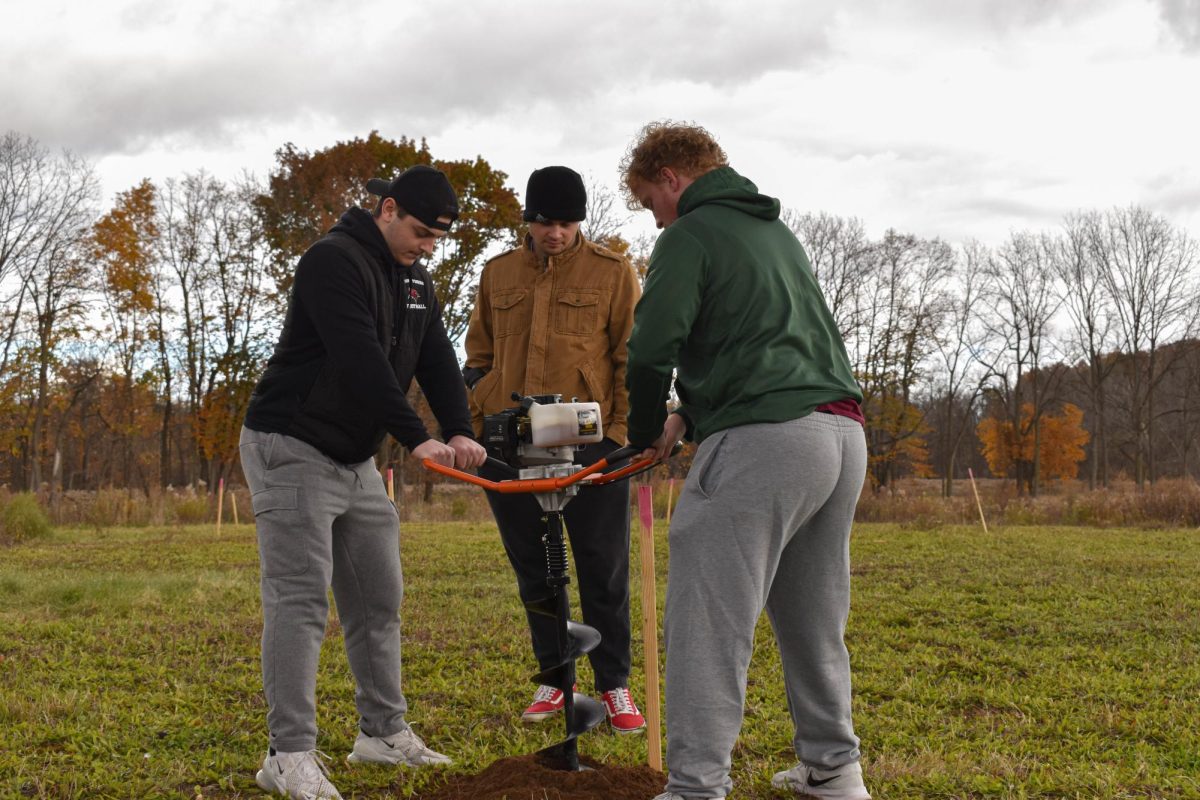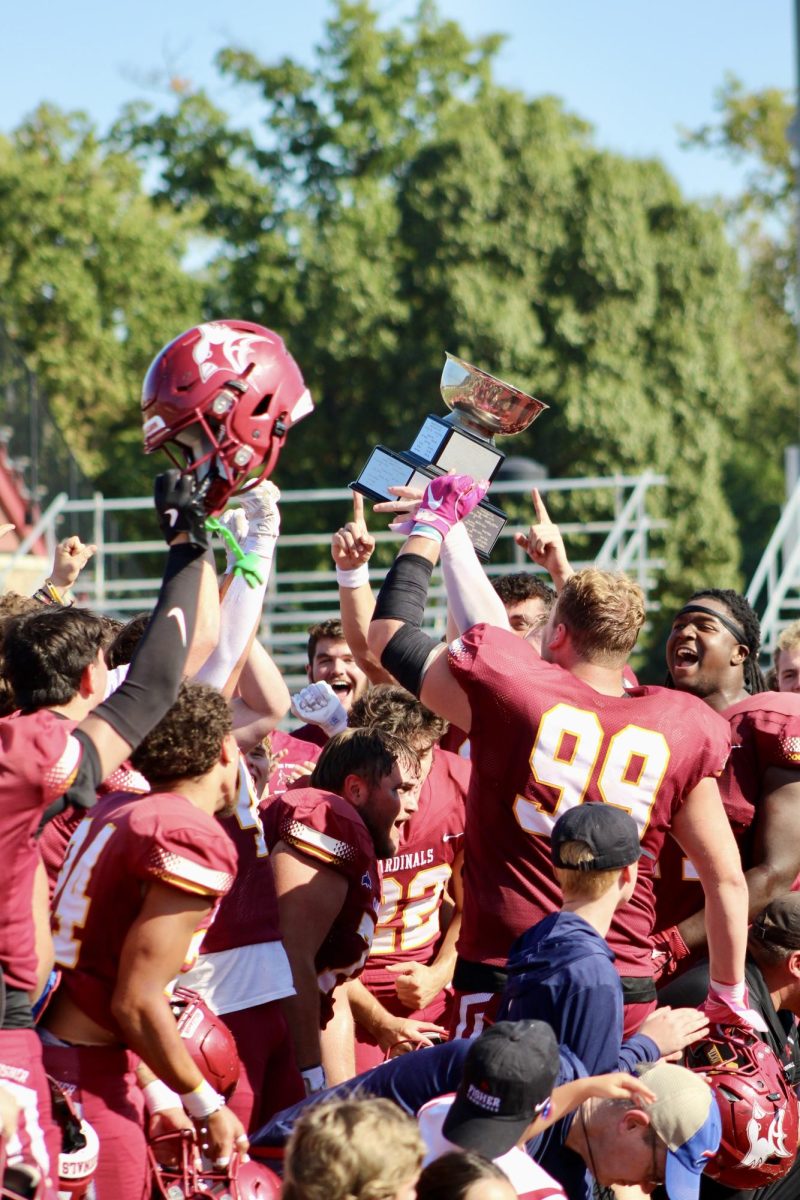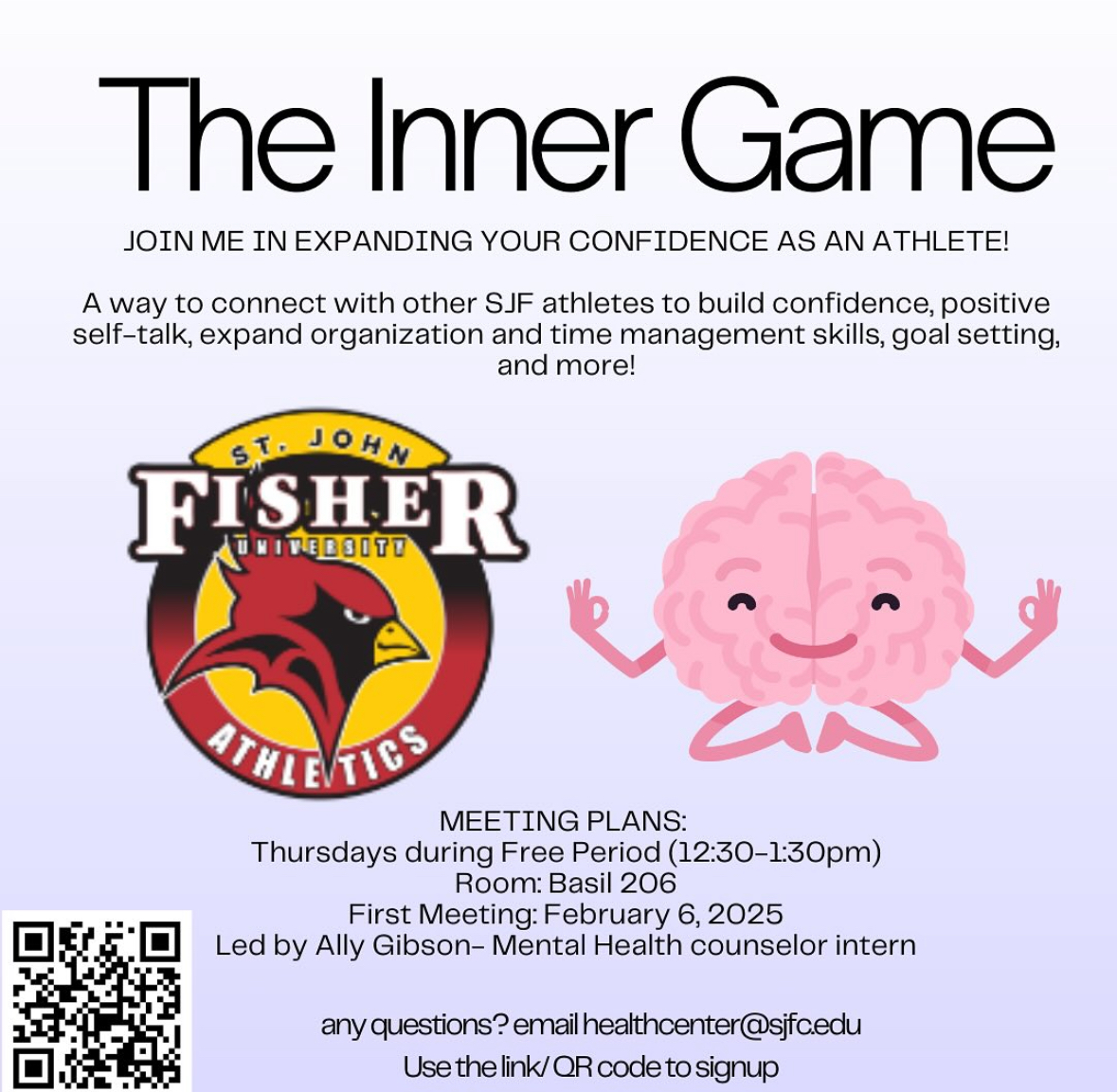In a hands-on lesson in sustainability, more than a dozen Fisher students rolled up their sleeves on a Saturday morning in October at the Hundred Acre Nature Park with a mission: to help revive the nearly extinct Great American Chestnut tree. Guided by Ron Sicker, the students’ Sustainability of Business Learning Community (LC) professor, and in partnership with the Rush Recreation and Park Association (RPA), the group planted 25 young trees. Through their efforts, these students have created 25 new chances for a revival of a staple in American culture.
The American Chestnut is currently functionally extinct in the wild – its decline resulting from a fungal blight, also known as chestnut blight (Cryphonectaria parasitica). In the case of the American Chestnut, the blight is caused by a fungal pathogen that leads to decay on the tree’s bark, eventually girdling and killing the tree.
Dr. David Kunsch, chair of the marketing and management department, donated the Great American Chestnut trees to the project through a connection with Go Native Tree Farm in Lancaster, Pennsylvania. His connection with the farm and Sicker’s upcoming sustainability course sparked the development of a project plan by the two to turn the planting into a learning opportunity for students.
The chestnut blight killed around four billion trees, leaving only around 40 old survivors. The 25 seeds planted by students were lab-confirmed to be 100 percent genetically pure American Chestnut. According to Kunsch, absolute genetic purity is important so that these trees can be planted without introducing new variants into the environment and hopefully breed them into the future.
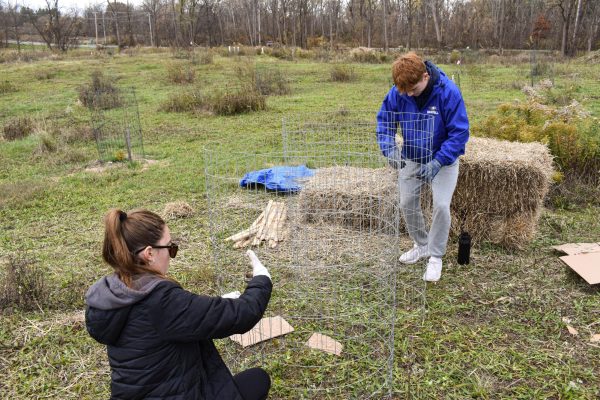
“Our professor (Sicker) was always telling us that this is the first pure American Chestnut that had been planted in New York State in about a hundred years,” said Jason Lawrence, a first-year biology major in the LC. “It’s pretty cool being the ones to be able to do that and kind of lead the path for new sustainability projects like this one.”
Sohil Rai is another first-year student in the LC who volunteered to pick up a shovel and get to work bringing back the tree species, noting the historical significance of the American Chestnut and why it is worth attempting a revival. “The American Chestnut played a big role back in the day for the Native Americans, which they used to build stuff like cabins, so trying to bring the American Chestnut tree is important to our community,” he said.
Both Kunsch and Sicker believe that acts of sustainability are not momentarily impactful, and can have an effect that stays with a participant for their whole life.
“I hope they get a sense of legacy because these trees virtually disappeared over a hundred years ago, and this is the first tiny step to reintroducing them to the eastern seaboard where they were a staple of pioneer and Indigenous life,” Kunsch said.
“I hope these students stay with these trees for the rest of their lives, and come back to harvest them and help plant more,” Kunsch continued.
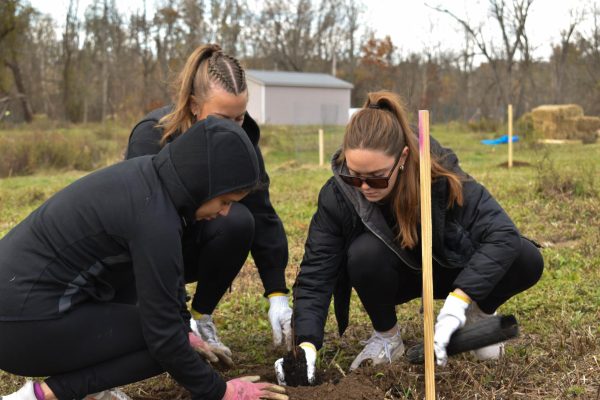
Sicker emphasized the importance of attempting to revive the fragile species in an effort to protect one of America’s treasures. He believes there is a long-lasting impact on participating in an event such as this that students can look back on and feel proud of in the future. The opportunity to possibly be responsible for the resurgence of a staple in American heritage begins at St. John Fisher, he said.
“Fisher gives back; that’s what we do. Our students were really excited about giving back. That, to me, is the underlying thread that’s woven through this whole project,” Sicker said.
“There are many benefits to not only us, but the environment surrounding the ecosystem and the culture that it brings since it’s an American Chestnut, but it also brings them back from being extinct,” said Rai.
Lawrence agreed.
“We got to do something sustainable as a group which made it a lot more fun,” he said. I think it shows that being sustainable doesn’t have to be this boring task – it could be something that you can come out with friends and do as a group and collaborate on. It feels good to do something good.”
The event was an overall success, with students planting 40 total trees, including the 25 American Chestnuts, and preparing the ground for another 20 future trees.
“…It was a lot of fun and the students got right down to work digging holes, planting, covering with cardboard and straw and caging to keep out deer – a real benefit to the park and nature,” said Kunsch. “The saying goes, ‘When is the best time to plant a tree? Answer: Yesterday.’”
A version of this article was published on St. John Fisher University’s News & Events website.


